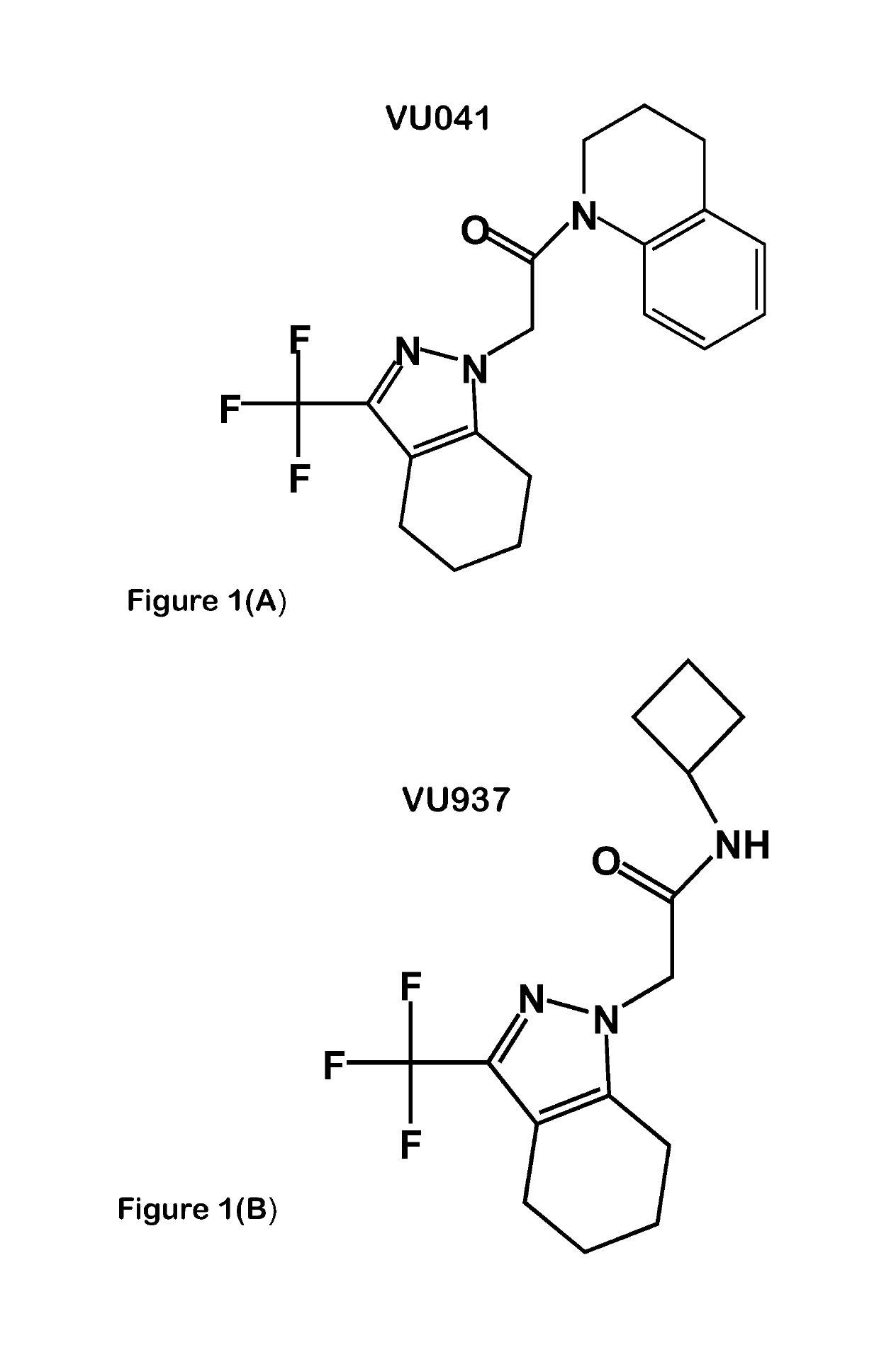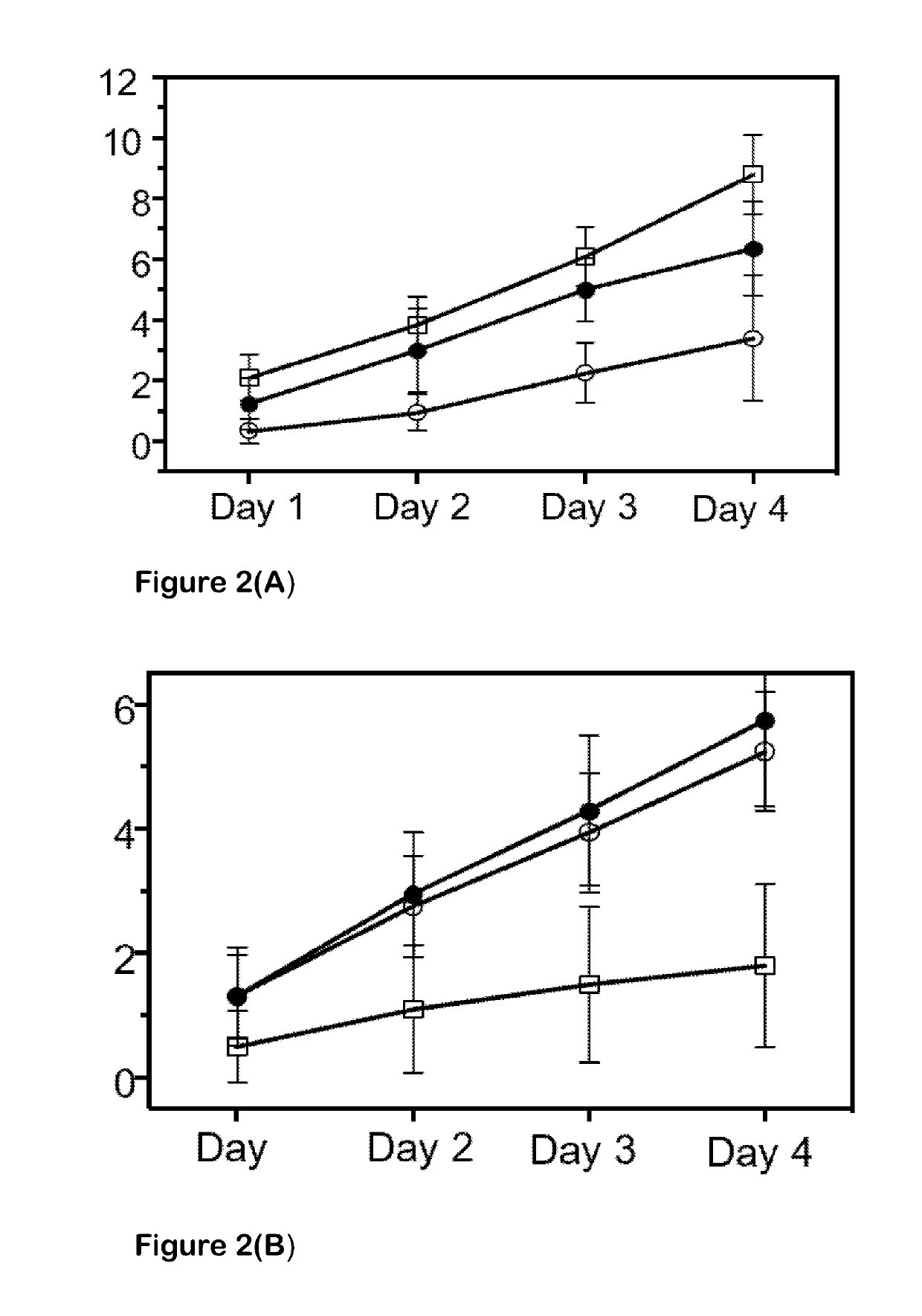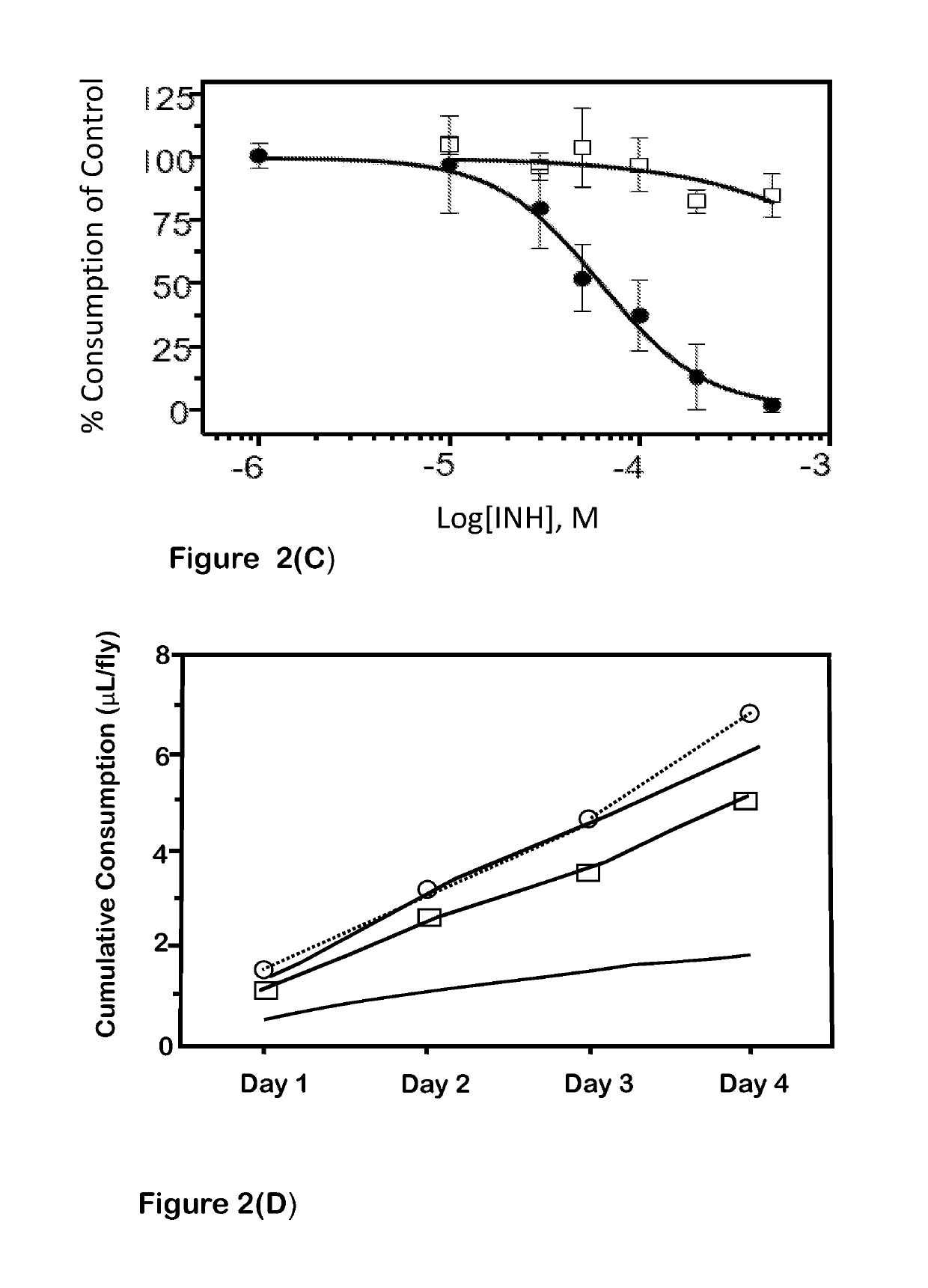Method for Controlling Hematophagous or Sap-Feeding Arthropods
a sap-feeding arthropod and hematophagous technology, applied in the field of hematophagous or sap-feeding arthropod control, can solve the problems of increasing feeding time, reducing food intake, and not much attention given to the salivary gland in prior methods of controlling arthropod pests, so as to reduce the feeding capacity of arthropods, increase the feeding time of drosophila, and reduce food intake
- Summary
- Abstract
- Description
- Claims
- Application Information
AI Technical Summary
Benefits of technology
Problems solved by technology
Method used
Image
Examples
Embodiment Construction
[0043]Ticks.
[0044]We used different, structurally distinct, small-molecule modulators to demonstrate the effect of Kir and K2P channels on fluid secretion (salivation) and ion secretion (osmoregulation) in the tick salivary gland. Either barium chloride or VU041, both of which are Kir channel blockers, reduced salivary output by approximately 60%. Both significantly reduced K+ and Na+ ion secretion rates in salivary droplets. We also found that the subfamily of Kir channels known as ATP-gated potassium (Katp) channels play a critical role in salivation. Pinacidil, an activator of Katp channels, reduced saliva secretion in Amblyomma americanum by 97% as compared to control. Pinacidil's inhibition of salivation was concentration-dependent, with IC50 values of 320 μM, 250 μM, and 120 μM at 10-, 20-, and 30-min of salivation, respectively. We used two tests to verify that pinacidil reduced salivation through KATP channel modulation and not by off-target effects. First, since KATP channe...
PUM
 Login to View More
Login to View More Abstract
Description
Claims
Application Information
 Login to View More
Login to View More - R&D
- Intellectual Property
- Life Sciences
- Materials
- Tech Scout
- Unparalleled Data Quality
- Higher Quality Content
- 60% Fewer Hallucinations
Browse by: Latest US Patents, China's latest patents, Technical Efficacy Thesaurus, Application Domain, Technology Topic, Popular Technical Reports.
© 2025 PatSnap. All rights reserved.Legal|Privacy policy|Modern Slavery Act Transparency Statement|Sitemap|About US| Contact US: help@patsnap.com



